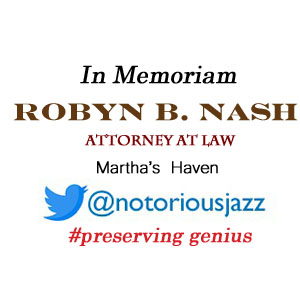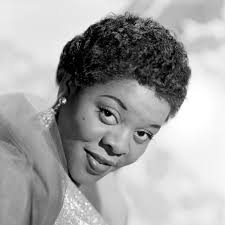
Three Wishes
More girl talk commenced where Nica was able to ask Dinah Washington what her three wishes would be if she was given them. Her reply was:
-
-
“Honey, if I told you, you’d faint! Well, all right. I wish I had three little girls ~ triplets.”
-
“Health and happiness for my two boys that I have. The last one is private.”
-
More Posts: history,instrumental,jazz,music,pannonica,three,vocal,wishes
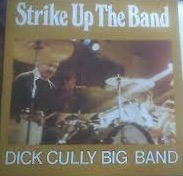
Daily Dose Of Jazz…
Richard Cully was born on April 19, 1949 in Manhattan, New York. He began his musical journey at the age of 16 studying with James Rago, Professor of Percussion at the University of Louisville. While still in high school, he formed a very popular quartet, The Charades, then went on to attend Berklee College of Music in Boston, Massachusetts. There he studied with Alan Dawson and continued his studies with former “Tonight Show” drummer Ed Shaughnessy.
Early in his career Dick performed a variety of musical styles, pop, rock, disco, jazz and country. However, in 1982, he formed the Dick Cully Big Band, a high energy, exciting unit performing a wide variety of arrangements for all age groups. In 1984, he became an artist/endorser for the world famous Slingerland Drum Company.
Cully has worked with Toni Tennille, Sandy Duncan, Florence Henderson, Frank Gorshin, Ray Anthony, Buddy Morrow, Skitch Henderson, Patti Page, Nanette Fabray, Les Elgart, Connie Haines, Bobby Rydell, comedians Foster Brooks and George Kirby. In 1989, the Dick Cully Big Band was chosen as “One of the best bands in the nation” by Down Beat magazine and featured on Black Entertainment Network’s “Jazz Discovery” television program.
Recognized as an educator and clinician, he is the author of Instructional Drum Videos The Workout, Secrets of the World’s Greatest Drummer and More Secrets of the World’s Greatest Drummer, which are in-depth analysis of the late Buddy Rich. Drummer Dick Cully continues to perform and lead his band.
More Posts: bandleader,drums,history,instrumental,jazz,music
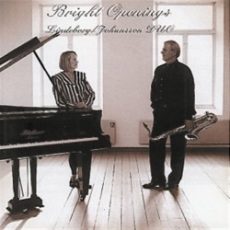
Daily Dose Of Jazz…
Susanna Lindeborg was born on April 18, 1952 in Gothenburg, Sweden and began classical training on piano at a young age which turned into work with jazz and improvisation, showing to be her right element. She started her professional musical career in the middle of the Seventies.
Susanna went on to mix acoustic and electronic instruments, which has been known most of all through the group Mwendo Dawa, which she leads and tours together with saxophone player Ove Johansson. Writing her own music for the group, she also toured with the female jazz group Salamander during the beginning of the 1980s. Both Mwendo Dawa and Salamander attracted a lot of attention on the European continent and in the United States.
She currently tours with her Lindeborg/Johansson Duo and Natural Artefacts. Her performances are both in the world of improvisation music, the world of electro~acoustic music, and solo improvisations. With the release of her first solo compact disc in 1989, she parlayed the acceptance into some work in Germany with some radio and TV recordings. Avant~garde pianist Susanna Lindeborg continues to push the boundaries of her music.
More Posts: bandleader,history,instrumental,jazz,keyboard,music,piano
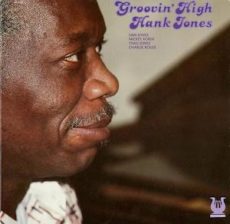
Requisites
Groovin’ High ~ Hank Jones | By Eddie Carter
This morning’s discussion begins with a 1979 album by Hank Jones recalling the music of Bebop, Groovin’ High (Muse Records MR 5169). Hank was born in 1918 and was one of seven children. His mom sang, and his two older sisters also played piano. His two younger brothers, Thad and Elvin would also become successful jazz musicians. A pianist of great versatility, Hank recorded over sixty albums as a leader and appeared on numerous others as a sideman. The musicians he worked with over his extensive career reads like an Encyclopedia Britannica of Jazz. Hank’s backed by brother Thad Jones (tracks: A2, A3, B1 to B3) on cornet, Charlie Rouse (tracks: A2, A3, B2, B3) on tenor sax, Sam Jones on bass, and Mickey Roker on drums. My copy used in this report is the original US Stereo album.
Side One opens with a tune by Dizzy Gillespie titled Algo Bueno. If you don’t recognize the name, it’s better known as the jazz standard, Woody‘n You. The trio is firing on all cylinders from the start of the brightly swinging melody. Hank is up first and delivers evident enjoyment on the keys. Sam walks the bass next in a cheerful and lively performance before the threesome regroups for the ending. Anthropology by Dizzy Gillespie and Charlie Parker takes the tempo upward on the quintet’s melody. Charlie and Thad share solo duties on the lead solo, then each gives an individual statement. Hank responds with some vivacious notes next, followed by Sam and Mickey who contribute two concise comments ahead of the closing chorus.
Sippin’ at Bells by Miles Davis is up next and receives a samba treatment beginning with the quintet’s danceable theme after a brief trio introduction. Charlie takes the lead and displays incredible warmth in the opening statement. Sam steps up next for an attractive performance, followed by Thad who offers a superb example of choice notes in the third solo. Hank has the final word and closes with an especially lovely interpretation into the group’s exit. Blue Monk is the first of three tunes by Thelonious Monk in this set. The first side finale opens with the ensemble paying homage to a tune Monk recorded the most. Hank begins with an alluring reading, then Sam’s closing statement adds some gentle lines leading to the climax.
Dizzy Gillespie’s jazz standard, Groovin’ High begins Side Two as a quartet performance with Thad establishing a nice momentum on the theme using a mute. He continues with an endearing opening performance that winks to Dizzy as it unfolds. Hank breezes into the second reading making a profound impression, and Mickey exchanges a brief conversation with Thad and Hank before the close. Monk’s second contribution, I Mean You is a lively little jam affording everyone a solo opportunity and gets underway with the ensemble’s spirited theme. Rouse gets into a vivacious groove on the first reading. Thad swings sprightly on the second solo, then Hank comes next with an impressive interpretation. Sam follows with some solid bass lines and Mickey fuels the finale with some brisk brushwork.
Monk’s Jackie-ing starts deceptively at a relaxed tempo with the quintet playing a march, then Thad delivers some exciting fireworks on the first solo. Charlie cooks for a few scintillating choruses next. Hank shifts into high gear on the third reading and Mickey takes us home with a fiery finale culminating with the group’s reprise and slow fade. Groovin’ High was produced by Fred Seibert and Rudy Van Gelder was the man behind the dials. The sound quality of this album is first-rate. The instruments come alive with an impressive soundstage for an album that’s over four decades old. If you enjoy jazz piano, are a Bebop fan, or are just discovering this talented musician, I invite you to audition Groovin’ High by Hank Jones for a spot in your library. It’s a thoroughly entertaining album that’s a pleasure to hear any time of the day or evening!
~ Blue Monk, Groovin’ High, Woody’n You – Source: JazzStandards.com ~ Anthropology – Source: Wikipedia.org © 2022 by Edward Thomas Carter
More Posts: choice,classic,collectible,collector,history,instrumental,jazz,music,piano

Daily Dose Of Jazz…
Han Bennink was born April 17, 1942 in Zaandam, Netherlands, the son of a classical percussionist. He began playing the drums and the clarinet during his teens. He also went on to learn to play the violin, banjo and piano, which feature him on some of his recordings.
Through the 1960s, while in his t,wenties he was the drummer with a number of American musicians visiting the Netherlands, including Dexter Gordon, Wes Montgomery, Sonny Rollins and Eric Dolphy.
He subsequently became a central figure in the emerging European free improvisation scene. In 1963 he formed a quartet with pianist Misha Mengelberg and saxophonist Piet Noordijk which performed at the 1966 Newport Jazz Festival. The following year Han co-founded the Instant Composers Pool with Mengelberg and Willem Breuker, which sponsored Dutch avant garde performances. Late in the decade he played in a trio with saxophonist Peter Brötzmann and Belgian pianist Fred Van Hove, which became a duo after Van Hove’s departure in 1976.
From the late 1980s through the early 2000s, Bennik collaborated closely with Dutch post-punk band The Ex, simultaneously playing through the 1990s in Clusone 3, a trio with saxophonist/clarinetist Michael Moore and cellist Ernst Reijseger.
He has recorded twenty albums as a solo or leader and recorded over a eight dozen albums as a sideman with the likes of Derek Bailey, Conny Bauer, Don Cherry and Alexander von Schlippenbach, Steve Lacy, Lee Konitz, Ray anderson, Gary Bartz, Jckie McLean, Paul Bley, Annette Peacock, Anthony Braxton, Marion Brown, Uri Caine, Myra Melford, and Sonny Rollins. (partial list)
His style is wide-ranging, running from conventional jazz drumming to highly unconventional free improvisation. Drummer Han Bennink is best known as one of the pivotal figures in early European free jazz and free improvisation, and he continues to push forward the envelope of his music at 80.
More Posts: bandleader,banjo,clarinet,drums,history,instrumental,jazz,music,piano,violin



